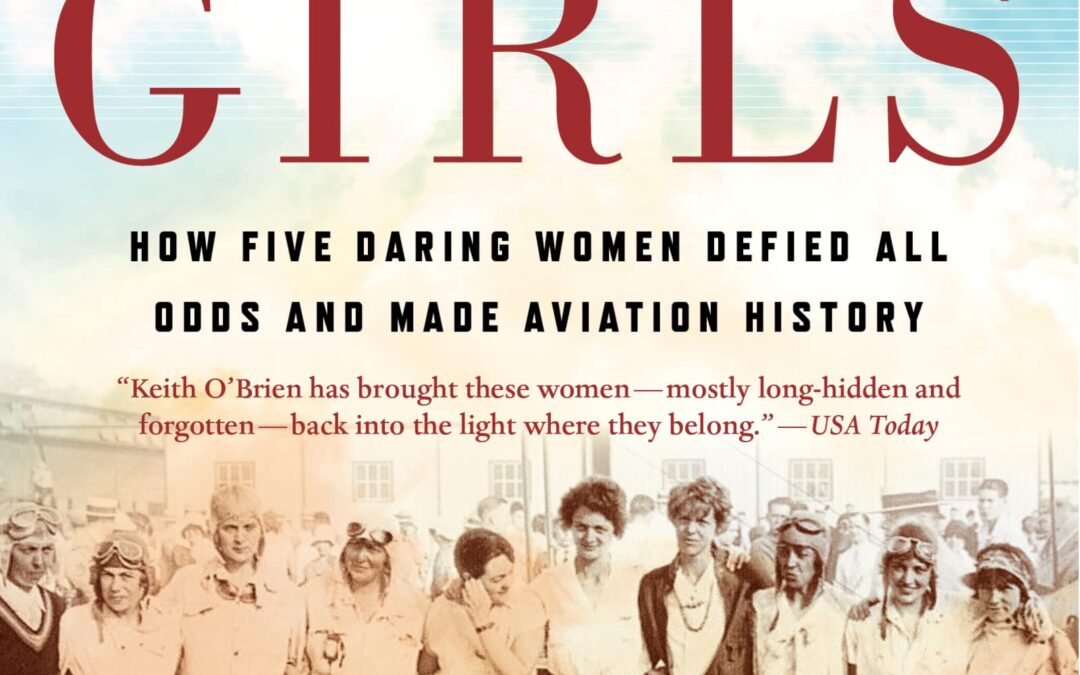
How five daring women defied all odds and made aviation history
Between the world wars, no sport was more popular, or more dangerous, than airplane racing. While male pilots were lauded as heroes, the few women who dared to fly were more often ridiculed—until a cadre of women pilots banded together to break through the entrenched prejudice.
Fly Girls weaves together the stories of five remarkable women: Florence Klingensmith, a high school dropout from Fargo, North Dakota; Ruth Elder, an Alabama divorcée; Amelia Earhart, the most famous, but not necessarily the most skilled; Ruth Nichols, who chafed at her blue blood family’s expectations; and Louise Thaden, the young mother of two who got her start selling coal in Wichita. Together, they fought for the chance to fly and race airplanes—and in 1936, one of them would triumph, beating the men in the toughest air race of them all.
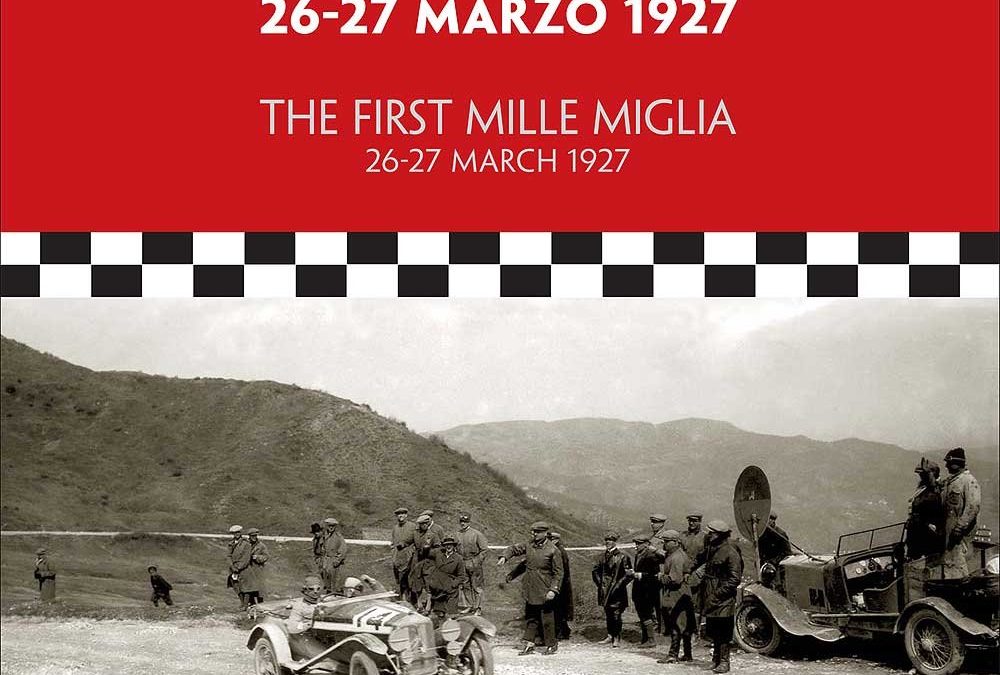
Ninety years ago the first Mille Miglia was held on March 26-27, 1927. The First Mille Miglia enables the reader to pin down a story which is not exactly secret, but has remained unknown until now. After exhaustive research of the Mille Miglia Archives, previously unpublished yet invaluable documentation came to light with the historic information they provide. This book tells of the first Mille Miglia’s regulations, the analytical description of 1,618 kilometres of the route – a rare description of the Italian roads in 1927 – specifications of the 101 cars entered for the event with photographs of the drivers, the results list and times at which each entrant reached the various controls at Parma, Bologna, Florence, Poggibonsi, San Quirico d’Orcia, Viterbo, Rome, Terni, Spoleto, Ancona, Rimini, Bologna and Treviso. From this journey into the recorded history of the first Mille Miglia, out came the story of just what the event really was like: a giant utopian undertaking, from which the book now attempts to separate legend from reality. By studying documents, most of which were previously unknown, a different story emerges of the 1927 Mille Miglia’s various stages, what the drivers looked like and all presented as real people. And much of the illustrative material is previously unpublished.
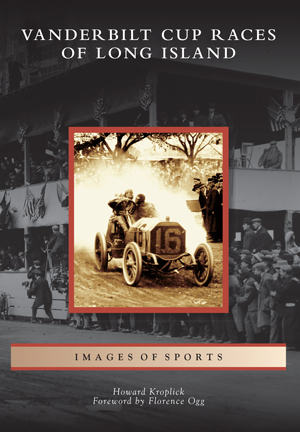
“Chain your dogs and lock up your fowls!” heralded posters announcing the first international road race in the United States and the first of the six William K. Vanderbilt Jr. Cup Races held on Long Island from 1904 to 1910. These races were the most prestigious sporting events of their day, drawing huge crowds from 25,000 to over 250,000 spectators. The Vanderbilt Cup Races had a far-reaching impact on the development of American automobiles and parkways and are a testament to the early racing spirit and drama. The rare images in this book, many published for the first time, have been selected from the archives of major museums, libraries, and private collectors.
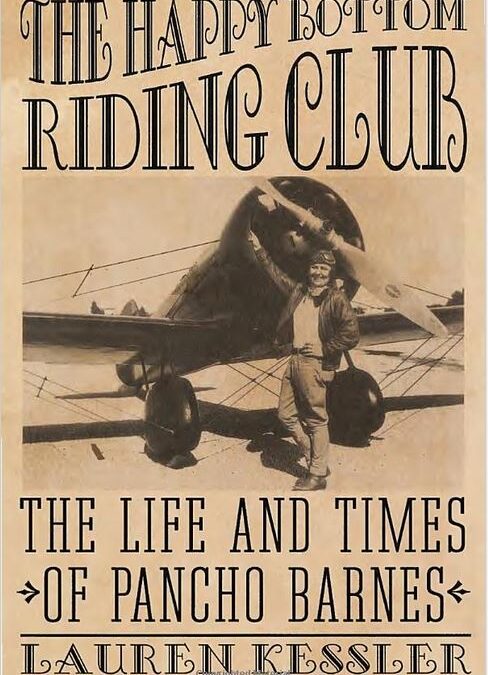
Pancho Barnes was a force of nature, a woman who lived a big, messy, colorful, unconventional life. She ran through three fortunes, four husbands, and countless lovers. She outflew Amelia Earhart, outsmarted Howard Hughes, outdrank the Mexican Army, and out- maneuvered the U.S. government. In The Happy Bottom Riding Club, award-winning author Lauren Kessler tells the story of a high-spirited, headstrong woman who was proud of her successes, unabashed by her failures, and the architect of her own legend.
Florence “Pancho” Barnes was a California heiress who inherited a love of flying from her grandfather, a pioneer balloonist in the Civil War. Faced with a future of domesticity and upper-crust pretensions, she ran away from her responsibilities as wife and mother to create her own life. She cruised South America. She trekked through Mexico astride a burro. She hitchhiked halfway across the United States. Then, in the late 1920s, she took to the skies, one of a handful of female pilots.
She was a barnstormer, a racer, a cross-country flier, and a Hollywood stunt pilot. She was, for a time, “the fastest woman on earth,” flying the fastest civilian airplane in the world. She was an intimate of movie stars, a script doctor for the great director Erich von Stroheim, and, later in life, a drinking buddy of the supersonic jet jockey Chuck Yeager. She ran a wild and wildly successful desert watering hole known as the Happy Bottom Riding Club, the raucous bar and grill depicted in The Right Stuff.
In The Happy Bottom Riding Club, Lauren Kessler presents a portrait, both authoritative and affectionate, of a woman who didn’t play by women’s rules, a woman of large appetites–emotional, financial, and sexual–who called herself “the greatest conversation piece that ever existed.”
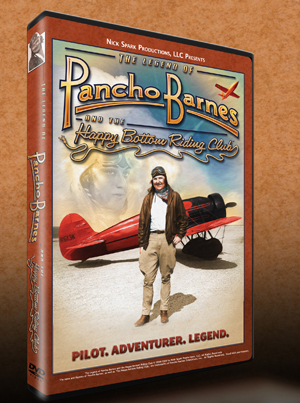
The Legend of Pancho Barnes and the Happy Bottom Riding Club is a documentary profile of one of the most colorful and accomplished female pilots of the early 20th Century. Florence ”Pancho” Barnes became the first female stunt pilot in Hollywood in 1929 and shattered Amelia Earhart’s air speed record in 1930. In the 1940’s and 50’s, Pancho entertained the best test pilots in the world men with the right stuff at her ”Happy Bottom Riding Club” guest ranch near Edwards Air Force Base. When Chuck Yeager broke the sound barrier in the rocket-powered Bell X-1 in 1947, he and his team partied with Pancho. A friend of the fast and the famous, Pancho Barnes was a swaggering, forceful woman whose exploits and accomplishments are truly the stuff of legend.
Featuring never-before-seen photographs and film footage and interviews with many of Pancho’s friends including astronaut Buzz Aldrin and famed test pilots Bob Cardenas, Bob Hoover and Chuck Yeager The Legend of Pancho Barnes is an unforgettable, exciting, and poignant romp through aviation history. Narrated by Tom Skerritt, with Kathy Bates as the voice of Pancho Barnes.







